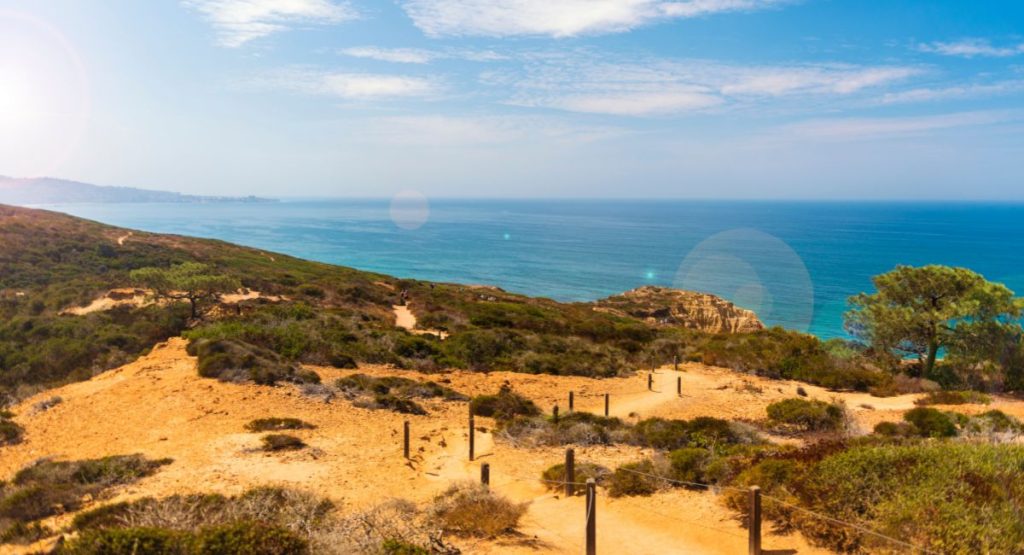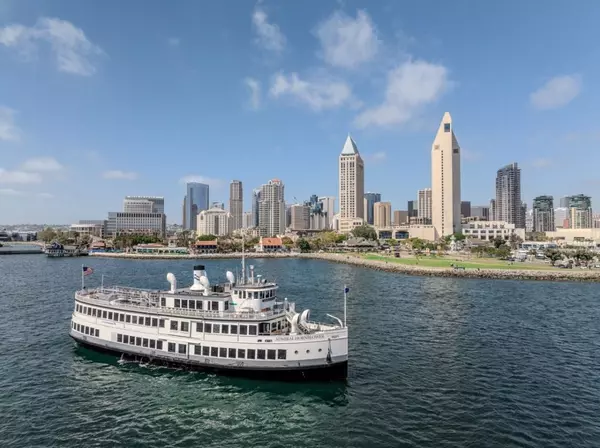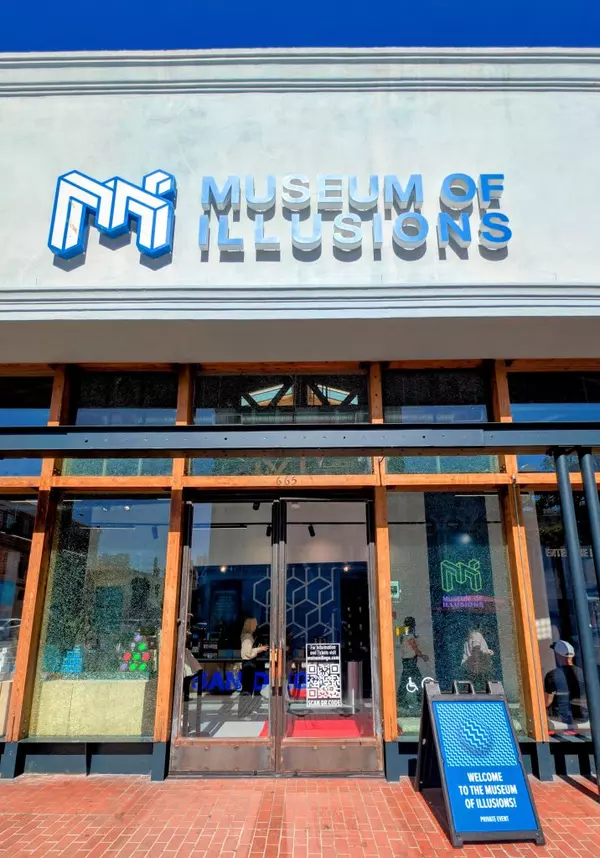Black’s Beach in San Diego: Everything You Need To Know
San Diego houses some of the country’s finest and best beaches. From vibrant Mission Beach to glamorous Coronado Beach, few are as unique and infamous as Black’s Beach in La Jolla.
Sitting between Torrey Pines and La Jolla Shores is Black’s Beach. This is a nude beach in San Diego and one of the largest in North America. Around a mile and a half of shore along Black’s Beach is clothing-optional and has been popular with nudists for decades.
Read through our breakdown of what to know before heading to Black’s Beach in San Diego.

History Of Black’s Beach In San Diego
San Diego’s nudist beach is one of the most famous in California and has a long and varied history.
The name Black’s Beach dates back to the early 20th century and comes from the Black family. This was a European-American family who lived in the area and owned a great deal of land along the Torrey Pines cliffs, where they had a farm and ranch.
Black’s Beach and the surrounding area went on to act as a military training camp during the Second World War, before establishing itself as a hub for surfers in the 1960s.
Thanks to the powerful effects of underwater Scripps Canyon, the beach plays host to some of California’s mightiest waves. Surfers often flock to the shores of Black’s Beach to take advantage of the quality waves and enjoy the natural beauty of the Torrey Pines bluffs, which serve as a backdrop.
Around the time Black’s Beach became a hot spot for keen surfers, another cohort of beach-goers began frequenting the area. Naturists hoping to soak up the sun and get a tan line-free glow have continued to visit this beach since the 1970s.
For many years, this was the country’s only nude beach.
Today, the northern section of the beach continues to be clothing-optional, stretching from the Torrey Pines Gliderport Trailhead to Flatrock Point.
The California Department of Parks and Recreation manages this portion of the beach as part of the Torrey Pines State Beach, a state park.
In contrast, the southern part of Black’s Beach is cared for by the city of San Diego, known as Torrey Pines City Beach. Nudism is prohibited here.
How To Get to Black’s Beach
In addition to its reputation as a surfer’s paradise and the only nudist beach in San Diego, Black’s Beach is also famously difficult to reach.
Located on a chunk of Torrey Pines State Beach beneath bluffs that have collapsed in the past, the beach is quite dangerous. Sunbathers are advised to avoid lying too close to the cliffs.
Here, we have detailed the four access routes to the beach to help you to reach the area safely:
Torrey Pines Gliderport Trail
Starting at the Gliderport near Salk Institute, you can park your car between 8 a.m. and 6 p.m.
Head south of the parking lot and notice a path set apart by railroad ties. Follow the course; you’ll see signage detailing rules and restrictions straight ahead.
To the left is the beginning of the winding trail, which can be slippery after rainfall. As you walk down, some parts of the path and steps are in better condition than others, and the bottom steps are particularly hazardous.
You’ll come to a Nudity Prohibited sign and head north about 100 yards until you reach orange cones labeled You Have Arrived. Indicating that you can undress from this point.
Silk Canyon Road From UCSD
The University of California, San Diego controls access to this steep road. Vehicle access is limited, but it’s unrestricted for pedestrians.
You’ll find this access point where La Jolla Farms Road and Black Gold Road intersect. Parking here is confined to two hours at a time on weekdays.
Walk towards the gate and follow the bendy road to the beach, where you’ll come to the famous Mushroom House on your left. Turn right here and continue to follow the road for about half a mile until you see the orange cones, showing you’ve reached the clothing-optional portion of the beach.
Torrey Pines State Beach
Head to the south parking lot at the base of Torrey Pines State Reserve to begin this trail.
Parking is available from 8 a.m. until sunset daily and costs between $10 and $25 per car. There’s also free parking available along North Torrey Pines Road.
From the parking lot, head south and walk about two miles, passing through a Flatrock gap. Continue until you reach a steel buoy, after which you can undress.
Please note, this route is only accessible during low tide.
La Jolla Shores
Begin your walk from La Jolla Shores Beach. There are several parking lots available in the area.
On arrival at the beach, walk north to the right and continue walking for three miles until you come to the orange cones. This signifies the boundary between the nudist northern portion of the beach and the city-owned southern coast.
This route is not open during high tides.

What To Expect from A Clothing-Optional Beach
Visiting a clothing-optional beach in San Diego can be a liberating experience. However, it can also be daunting and uncomfortable for newbies to the naturist scene.
We’ve put together some tips to help ensure a comfortable and respectful visit.
- Nudist beaches are generally very laid-back and nonjudgemental; you’re likely to see a range of body types and age groups present. People are respectful of each other’s personal space and privacy.
- Body positivity is very much a part of visiting a San Diego nude beach. There’s no pressure on visitors to adhere to a certain body standard. It’s more about embracing yourself and feeling connected to nature.
- It’s common to see naturists and clothed people sharing space and mingling with one another if clothing is optional. There’s no obligation to undress fully.
- Engaging in sexual activity at a naturist beach is prohibited, and it’s not the intended purpose of these areas. It’s disrespectful and inappropriate.
- Taking photographs at nude beaches is discouraged and an invasion of beachgoers’ privacy. If you plan to take pictures, ensure you have permission of anyone in the frame, though it’s best to refrain entirely.
- If you plan to sunbathe nude, pack plenty of sunscreen. Particularly to apply to body parts that you do not regularly expose to the sun.

Frequently Asked Questions About San Diego Black’s Beach
Black’s Beach does not currently have an age restriction. That said, the crowd usually ranges from early 20s to 60s, and the area’s status as a nudist beach tends to draw in more adults than families.
If you plan to visit with children and are hesitant, you can enjoy non-nudist sections of the beach. It’s worth being mindful of children’s comfort level and respecting their boundaries and those of other visitors.
Black’s Beach has permanent lifeguard stations. Lifeguards are usually on patrol from 9 a.m. until sunset.
It’s perfectly normal to feel apprehensive if visiting a nude beach for the first time.
When you arrive, you’ll notice a positive and relaxed atmosphere at Black’s Beach, which will help you feel more comfortable and at ease.
There’s also a good chance there will be other first-timers experiencing the same feelings.
Much like any other nudist beach, Black’s is generally very safe for visitors.
However, as with any public space, it’s a good idea to keep an eye on your belongings and only swim in designated areas.
Pack all your usual beach must-haves when visiting Black’s or any other clothing-optional beach.
Be sure to bring sunscreen, water, a towel, and an umbrella if you prefer to avoid getting too much sun. Lying on a towel is encouraged for hygiene and comfort.

We hope you’ve found this information helpful in planning a visit to Black’s Beach in San Diego, one of the largest clothing optional beaches in North America.
The post Black’s Beach in San Diego: Everything You Need To Know appeared first on San Diego Explorer.
Categories
Recent Posts

![Things To Do On Halloween in San Diego [2025]](https://img.chime.me/image/fs/chimeblog/289037000021392/39491/20251001/16/w600_original_78603db6-11a2-4b7b-b91a-e48b2548b588-jpg.webp)








GET MORE INFORMATION


